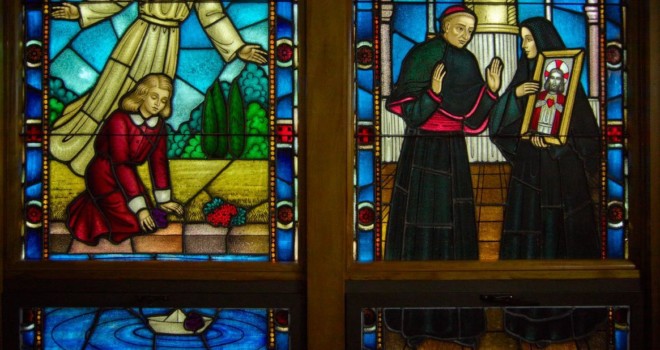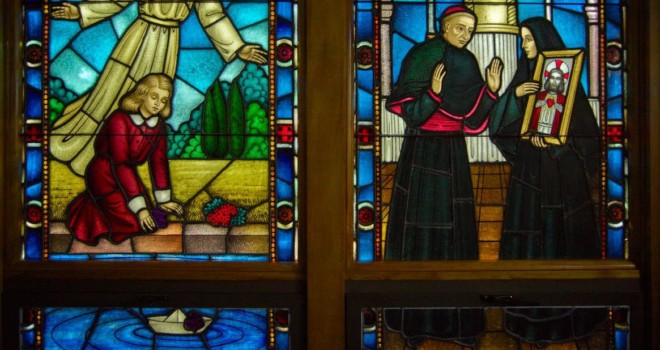Somewhere in northern Italy, a frail little girl crouches by the side of a canal. She is dropping little boats made of paper in the swiftly flowing water, and nestled in each boat there is a violet. The girl imagines each violet is a missionary, and each boat is hurrying off towards India or China.
The little girl is Francis Cabrini, the youngest of eleven children, and one of only four who will survive past adolescence. She is small and fragile, and when she gets older, she is told that, despite her obvious faith and intelligence, she cannot take vows with the religious order she seeks to join. Cabrini floats on past this obstacle, taking a headmistress position at an orphanage, and gathering like-minded religious women around her.
Eventually, Cabrini is allowed to take religious vows, and her charitable efforts, her work ethic, and her resourcefulness, bring her to the attention of Pope Leo XIII. Hoping to seek approval to float on to China, to do what the violets of her youth did, and evangelize the people there, Cabrini asks the Pope for his permission.
Permission is given, but with a twist. Instead of sailing to China, Pope Leo XIII asks Cabrini to head to America, to minister to the swelling population of Italians who were flooding into the States, often in total poverty. And so the frail violet took a boat of wood, not of paper, to the West, and not the East.
Violets are a curious flower. The fragrance contains a chemical called ionone, which first stimulates our sense receptors with a sweet, ephemeral smell, then binds to them, causing them to shut off temporarily. You cannot register the smell of violets for more than a few moments at a time, before the ionone “blinds” you to it, only to pop up a while later, just as fragrant as before. This here-then-gone phenomena is the perfect metaphor for Cabrini, whose phenomenal good works popped up in New York, then Chicago, then Seattle, New Orleans, and Denver. She was in one spot, founding hospitals and schools, then gone, only to reappear in another city, working just as tirelessly.
Despite tremendous odds, Cabrini continued on. She founded institutions to serve the poor and ill, she rallied community support and showed a knack for finding people who would donate time, talent, and treasure to these undertakings. She cared for people’s physical and spiritual needs with an energy and perseverance that was astounding.
And then, like the scent of the violet, she was gone from this world, dying at the age of 67, while preparing Christmas candy for sick children. However, just like the molecules of violet fragrance that linger in our olfactory senses despite our ability to sense them, so was Mother Cabrini still working for us, this time through her intercession.
A short three years after her death, Mother Cabrini, once a frail girl dropping paper boats and violets into the water, dreaming of bringing the light of Christ to those in the darkness, brings light back to tiny Peter Smith’s eyes.
Peter Smith, whose newborn eyes had been accidentally given a far greater dosage of silver nitrate than tolerable, was completely healed, burned, charred tissue and all, after Mother Cabrini’s spiritual daughters prayed for her intercession.
The astounding miracle approved for Cabrini’s beatification was a fitting one for God’s good servant, whose vision resulted in hospitals, orphanages, religious orders, schools, and even, to the delight of the small girl she once was, missionary trips to China and Siberia. The little child with the boats full of violets spread God’s love to the West, East, and all points in between.
✠
image: Stained-glass windows inside the chapel at the Mother Cabrini Shrine in Golden, Colorado by Carol M. Highsmith / Library of Congress, Prints & Photographs Division, photograph by Carol M. Highsmith [reproduction number, e.g., LC-USZ62-123456] (Public Domain)













